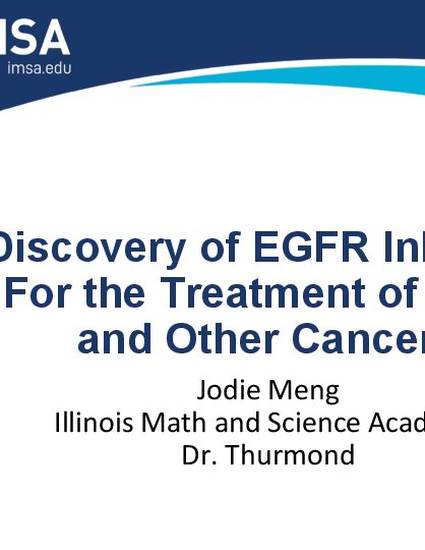
Epidermal Growth Factor Receptor (EGFR) is a transmembrane protein involved in the regulation of signaling pathways and is known to be frequently overexpressed in epithelial tumors. Erlotinib is a small molecule inhibitor of EGFR commonly used for the treatment of lung and pancreatic cancers. In the present study, 707 selective inhibitors of EGFR were designed based on the erlotinib prototype. Results were filtered by parameters outlined in Lipinski’s rule. Molecular simulation programs such as SeeSar, AdmetSar, SwissADME enabled the prediction of the compounds’ toxicity, binding affinity, physicochemical properties, and pharmacokinetics. The equilibrium dissociation constant was decreased from 101.469534 to 0.000054, therefore increasing the binding affinity by over 1,879,065 fold. The data suggested that modifying the 1,2-Dimethoxyethane structures, particularly by replacing oxygens with nitrogens and adding cyclic compounds to the ends, resulted in the greatest increase in binding affinity to EGFR. Rigidifying linkers and adding O-H groups allowed for the decreased inhibition of hERG, a protein involved inducing cardiotoxic effects. These findings may lead to further optimization of anticancer drugs and provide a computational strategy for drug design.
Available at: http://works.bepress.com/jodie-meng/5/
